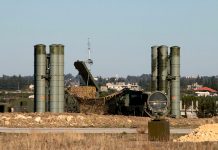
Russia’s Defense Export Contracts Reach Record High Amid Rising Global Demand
Rosoboronexport, Russia’s primary arms exporter, has disclosed the scale of its defense agreements with international clients signed since the beginning of the year. According to CEO Alexander Mikheev, the total value of orders for Russia’s military-industrial sector reached an unprecedented $57 billion by the close of 2024, equating to over 5.1 trillion rubles at current exchange rates.
This milestone reflects the growing global interest in Russian weaponry, particularly as conflicts worldwide continue to shape defense priorities. At the IDEX 2025 exhibition in Abu Dhabi, Russia is presenting an extensive lineup of state-of-the-art military hardware, showcasing continuous upgrades based on insights gained from recent combat scenarios.
Mikheev highlighted that the exhibition aims to demonstrate Russia’s integrated approach to designing and modernizing weaponry. The country’s defense advancements are informed by practical experience from contemporary military operations, strengthening its position in the global arms market.
“The core concept of our exhibition is to showcase Russia’s comprehensive strategy for developing and enhancing military equipment, drawing from lessons learned in modern warfare. This approach has already led to contracts exceeding $4.5 billion with 15 allied nations in 2025,” Mikheev stated, emphasizing Russia’s expanding influence in the defense sector.
Russia’s involvement in conflicts such as those in Syria and Ukraine has played a significant role in refining its military technology. Insights from these engagements have allowed Russian defense manufacturers to improve their systems, ensuring they meet the demands of modern combat environments.
While older platforms like the T-90 tank and Su-35 fighter jet remain in high demand, the focus has shifted towards integrating battlefield experience into the development of more advanced weaponry. These enhancements include improvements in firepower, durability, stealth, and interoperability with modern military forces, giving Russian-made systems a competitive edge in the global market.
As a result, Russia’s defense export portfolio has now surpassed $60 billion (approximately 5.4 trillion rubles), underscoring its strong standing in the international arms trade. However, details of specific contracts remain confidential due to diplomatic and economic pressures from Western nations, which have sought to hinder Russia’s military exports through competitive restrictions.
These geopolitical challenges have particularly targeted Russia’s key defense agreements with countries outside the Western sphere of influence. In response, Russia has intensified efforts to expand its military sales, especially to nations seeking to diversify their defense procurement away from Western suppliers.
One of the most notable developments in Russian arms exports is the planned delivery of Su-57 fighter jets to foreign buyers. Rosoboronexport confirmed that in 2025, a foreign client will receive the first-ever export version of Russia’s fifth-generation stealth fighter. This marks a significant milestone in the nation’s military capabilities, reinforcing its role as a major player in the global defense industry.
The Su-57 is Russia’s answer to Western-built aircraft like the F-35, and its successful entry into international markets would represent a bold challenge to Western dominance in advanced fighter technology.
Russia’s growing defense export portfolio highlights its ability to provide a broad range of military solutions suited to various geopolitical contexts. Many nations previously reliant on Western defense suppliers are now turning to Russia for cost-effective, technologically advanced alternatives that offer greater strategic independence.
This shift is particularly evident among countries that feel constrained by U.S.-led alliances and sanctions. As Western powers continue efforts to isolate Russia, several nations are seeking to broaden their defense partnerships to mitigate risks associated with over-reliance on Western suppliers.
In response, Russia has positioned itself as a reliable provider of advanced military technology for nations wary of NATO’s influence or looking to establish more independent defense strategies. The rising demand for Russian-built aircraft, weaponry, and integrated military systems signals a changing global defense landscape, where diversification is becoming a priority for many governments.
Despite ongoing sanctions and geopolitical opposition, Russia is steadily expanding its influence in the international arms market, focusing on equipping nations with cutting-edge military capabilities.
As the global defense industry evolves, Russian manufacturers are adapting by incorporating emerging technologies such as artificial intelligence, advanced radar systems, and long-range precision weaponry. These innovations are shaping the future of military strategy, and Russia is striving to maintain its competitive edge by aligning its products with the latest combat requirements.
The arms trade remains fiercely competitive, but Russia’s commitment to modernization and adaptability will likely play a decisive role in its long-term success on the global stage.





